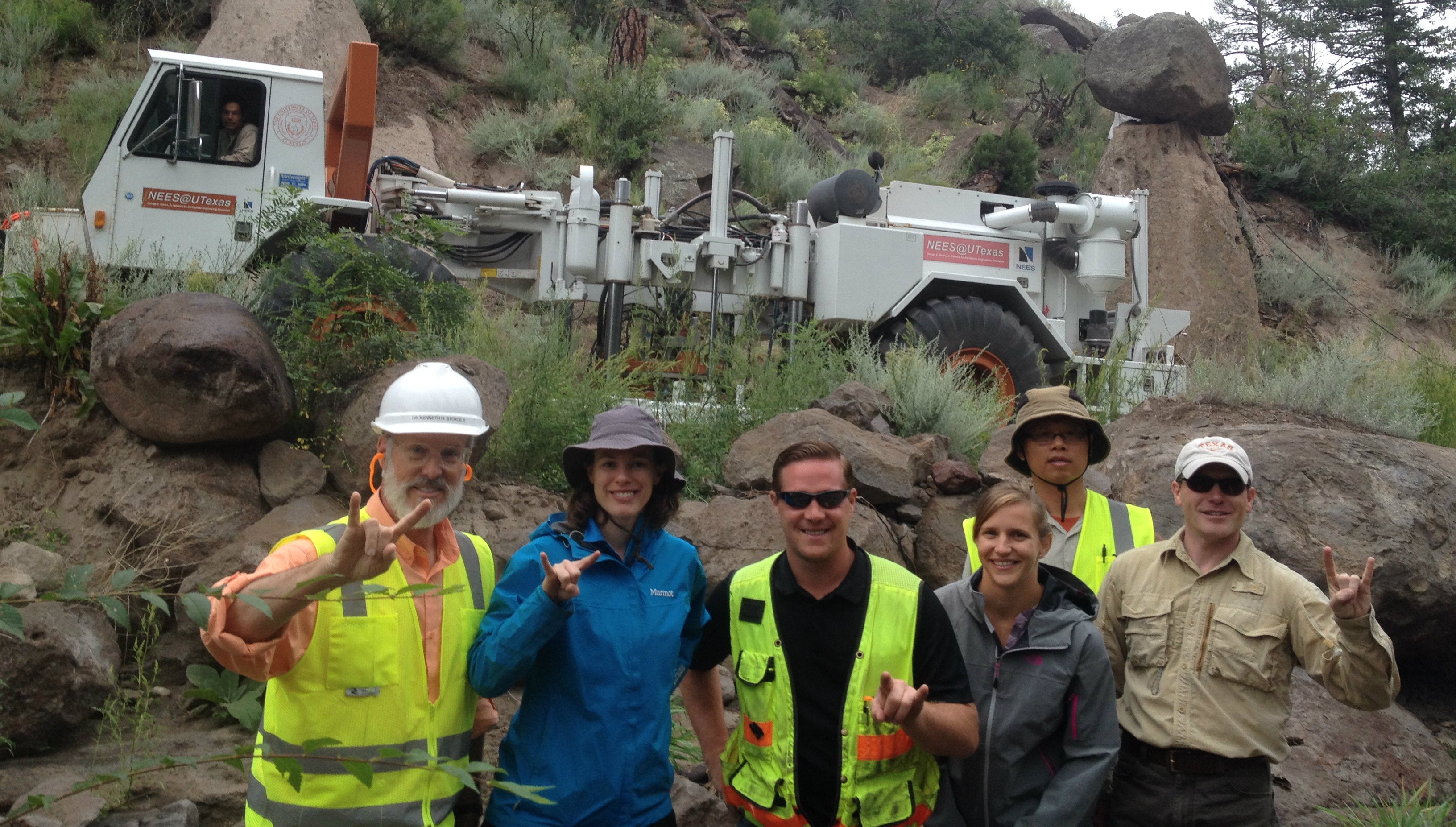
AUSTIN, Texas — The National Science Foundation (NSF) has selected the Cockrell School of Engineering at The University of Texas at Austin for a $3.8 million grant to support research that aids in the design of buildings and infrastructure that can better withstand earthquakes, hurricanes, storm surges and other natural hazards.
The grant is part of the new Natural Hazards Engineering Research Infrastructure (NHERI) program announced today by the NSF. The five-year program will provide a network of shared, state-of-the-art, experimental research facilities located at seven universities across the country.
At UT Austin, the grant will establish NHERI@UTexas, a natural hazards experimental facility aimed at protecting our nation’s existing infrastructure and helping in the planning and design of new infrastructure that is more resilient to earthquakes, hurricanes and other wind and water hazards.
Professor Kenneth Stokoe II and his team, including associate professor Brady Cox and assistant professor Patricia Clayton, will lead NHERI@UTexas.
“The grant will allow us and other NSF-supported researchers to develop new knowledge that will be used to make our nation’s bridges, levees and buildings safer and more resilient,” Stokoe said. “With the resources provided by NHERI, we believe we will make a difference as engineers in preventing natural hazards from becoming natural disasters.”
NHERI@UTexas will advance new methods of earthquake, wind and water hazards research and will have three main focus areas: subsurface imaging, soil characterization and structural evaluation. The key pieces of equipment for this research are NHERI@UTexas’ large, one-of-a-kind mobile shaker trucks called Liquidator and T-Rex. With these mobile shakers, the researchers plan to apply advanced imaging techniques, similar to those used in health care, to image the near-surface of the earth and retrieve engineering design parameters. The information will be used to create computer models that can identify weak spots in levees that could potentially fail in the event of a large earthquake or hurricane.
Additionally, the researchers plan to uncover knowledge about how different soils and foundation systems respond to dynamic loading (forces that change or vary with time), a key to understanding how buildings and infrastructure may perform in an earthquake or extreme wind storm.
The team will also use the large shaker trucks to dynamically test structures in different parts of the U.S. These experiments will not only assist in the design of future infrastructure, but could also be used to assess the strength of existing bridges and buildings and predict their life expectancy. The resulting assessment could help city, state and federal officials and policymakers plan for future infrastructure repairs and determine funding priorities.
“At the end of the grant, we hope to have made significant progress toward ensuring that our nation’s existing and future infrastructure is more resilient to the demands of natural hazards,” Cox said. “This will help us retrofit and build sustainable communities.”
Also part of the NHERI program, the NSF is funding a $13.7 million cyberinfrastructure research effort, called DesignSafe, led by Cockrell School Professor Ellen Rathje. UT Austin researchers will develop a software platform, data repository and tools for researchers to advance hazard-resistant design that will improve the safety of people and property.



